Learn how you can Unlock Limitless Customer Lifetime Value with CleverTap’s All-in-One Customer Engagement Platform.
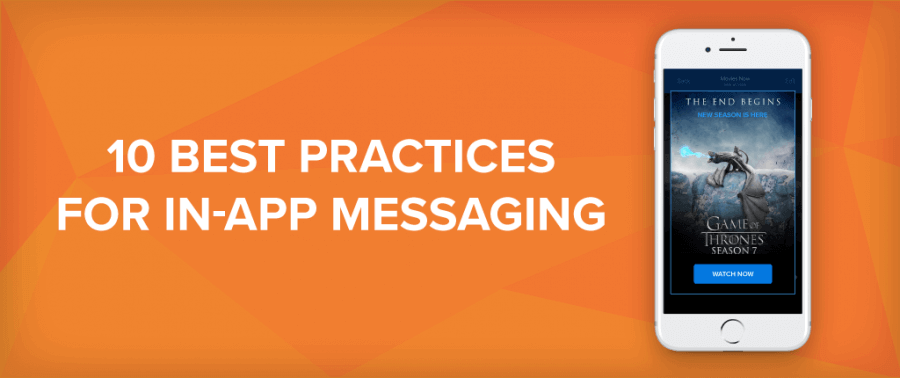
In-app messaging is quickly becoming an effective way to communicate with customers. It provides a great way for brands to inform, engage and sell to customers on a regular basis.
At CleverTap, we’ve seen that in-app messages can increase your click through rates by over 100 percent in comparison to push notifications.
An in-app message is a message that’s delivered to customers while they’re using your app.
In-app messages are different than push notifications, which show up on the homescreen of a smartphone. Users must opt-in to push notifications too, but there’s no such requirement for in-app messaging.
Here’s a quick list of the most common uses:

The Psychology of Insanely Addictive Apps
Below, we’ve collected some of the best in-app messaging examples and best practices to follow. No matter what industry you’re in, these tips and tactics will elevate your campaigns and make them more effective.
1. Segment your messages
To make sure customers pay attention to the message they receive, it’s important to send messages to certain segments rather than blasting a note to every single app user.
You’ll get the best engagement rates by sending messages to specific groups of customers. For instance, new users should receive messages that explain how to use the app. eMovies sends this in-app message to its new user segment: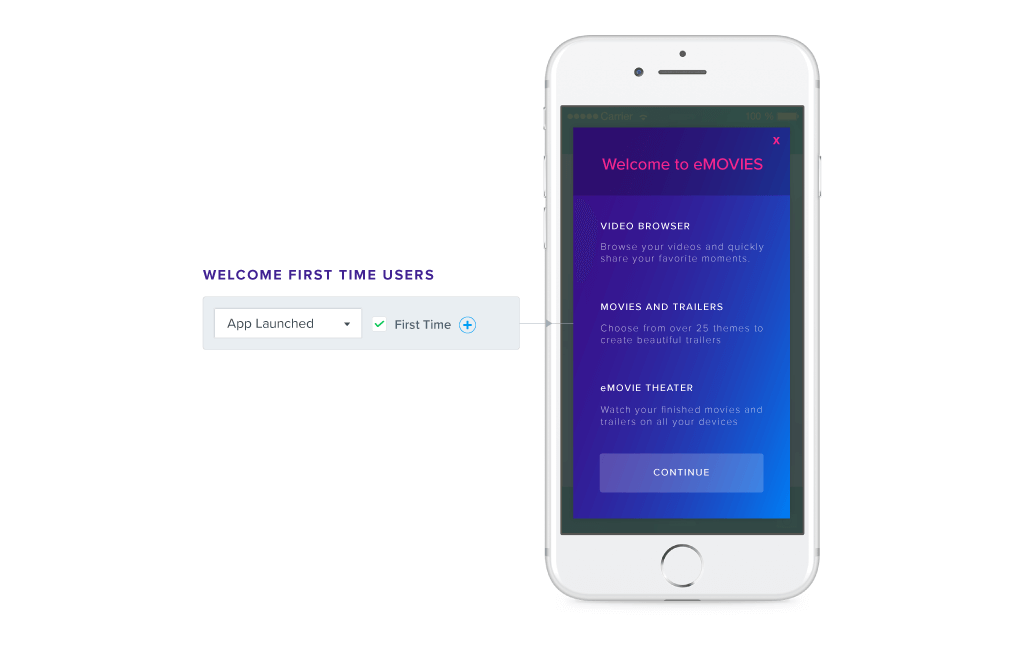
2. Celebrate Customer Milestones
As customers reach milestones, celebrate their activity with a personalized message. At CleverTap, we have seen that adding the name of the user in a message helps increase click throughs by more than 10 percent.
Another example of personalization would be based on the stage the customer is in your app. For instance, when a customer downloads your app, reaches a certain game level or becomes a VIP customer, send them a message with an incentive to encourage continued engagement.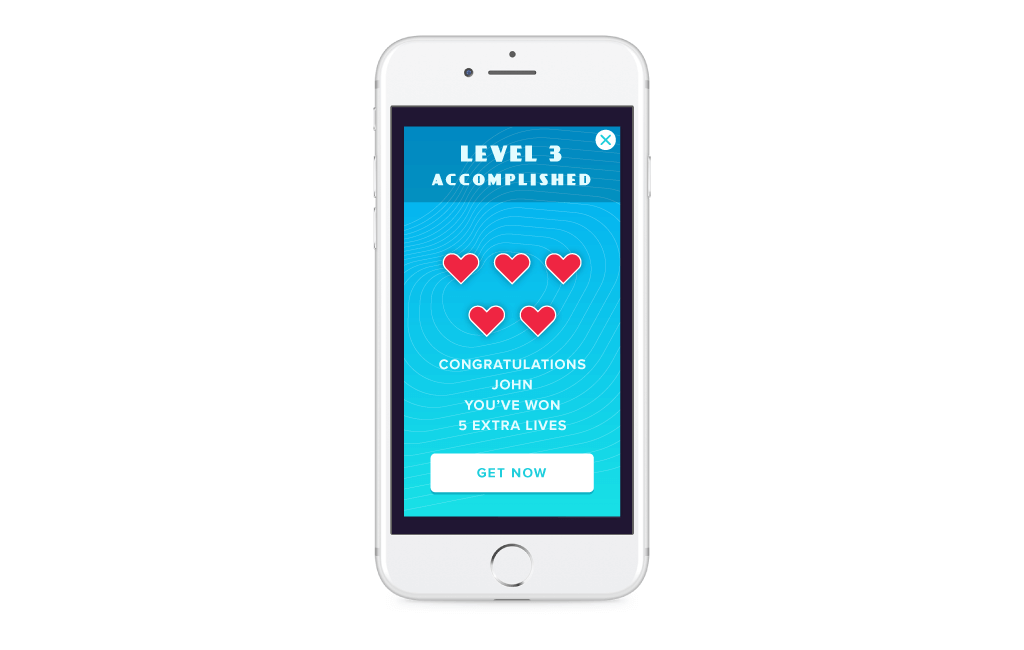
3. Engage Customers as they Come or Go
Have you considered when your message should appear? This tip might surprise you because it’s not necessarily something that everyone thinks about.
The best time to show in-app messages is when a customer launches the app or is about to leave. Why? If a customer is using your app, you don’t want to interrupt their experience or they could get annoyed.
When customers open this radio app, for example, they’re immediately prompted to enter a contest before they select music to listen to.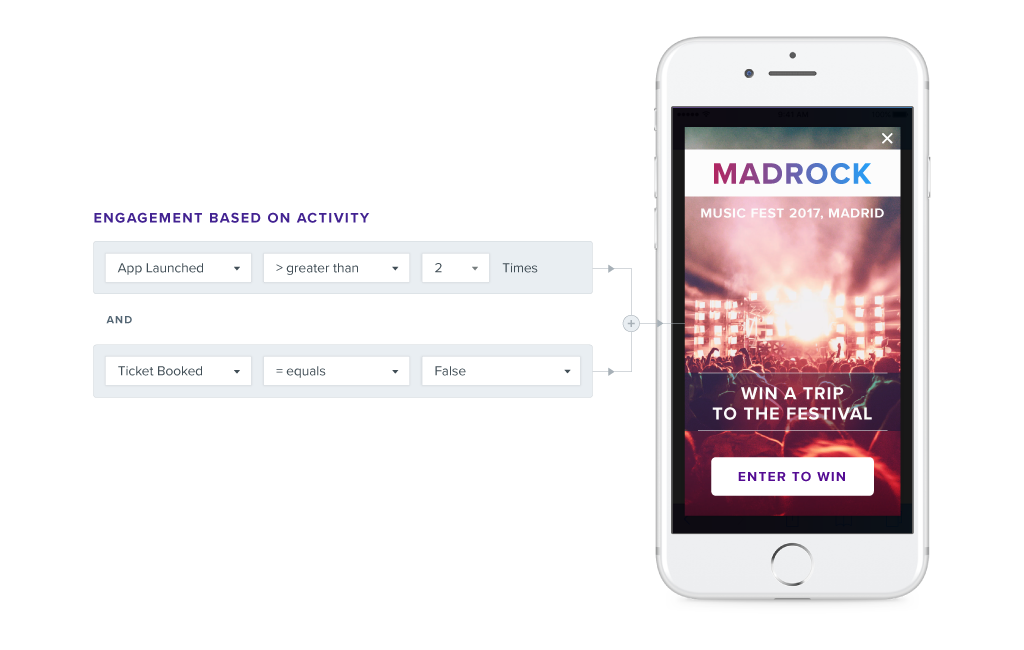
4. Create Original, Concise Copy
Your message should be original and short. You don’t have a ton of space, so you should only use a few words. This is especially important if you’re including an image. You don’t want the message to look crowded.
Here’s an in-app message that’s short and sweet: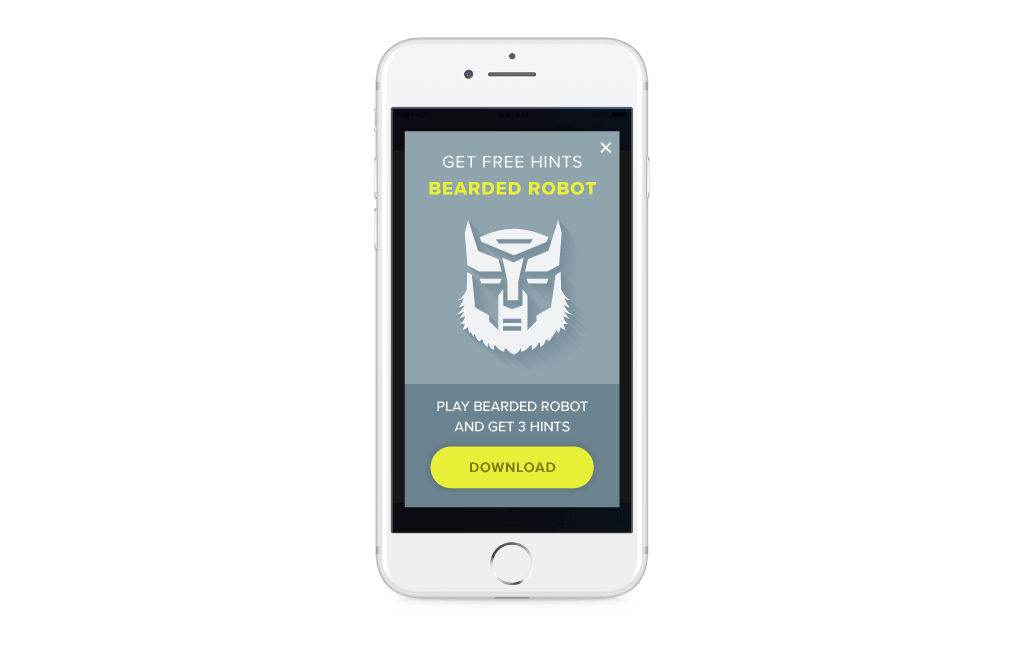
5. Use Headlines Wisely
To help create concise copy, use a headline and a subheading, if needed. Much like a newspaper headline, the font should be larger than the rest of the text to grab attention. A subhead should be a bit smaller, but still bigger than the message text.
The headline in this in-app message from Internetflix is a great example:
6. Get Visual with Images and Emojis
Spice up your messages with images – or even emojis. It might be surprising to learn that posts with images produce a 650 percent higher engagement rate than text-only posts. We have seen similar results at Clevertap – in-app messages with an emoji have 40 percent higher engagement than messages without an emoji.
When combining text and images, make sure the design is clean. The image or emoji should pull readers in and encourage them to read your short message.
This in-app message uses a great image to draw you in. Think about how boring this message would be without it.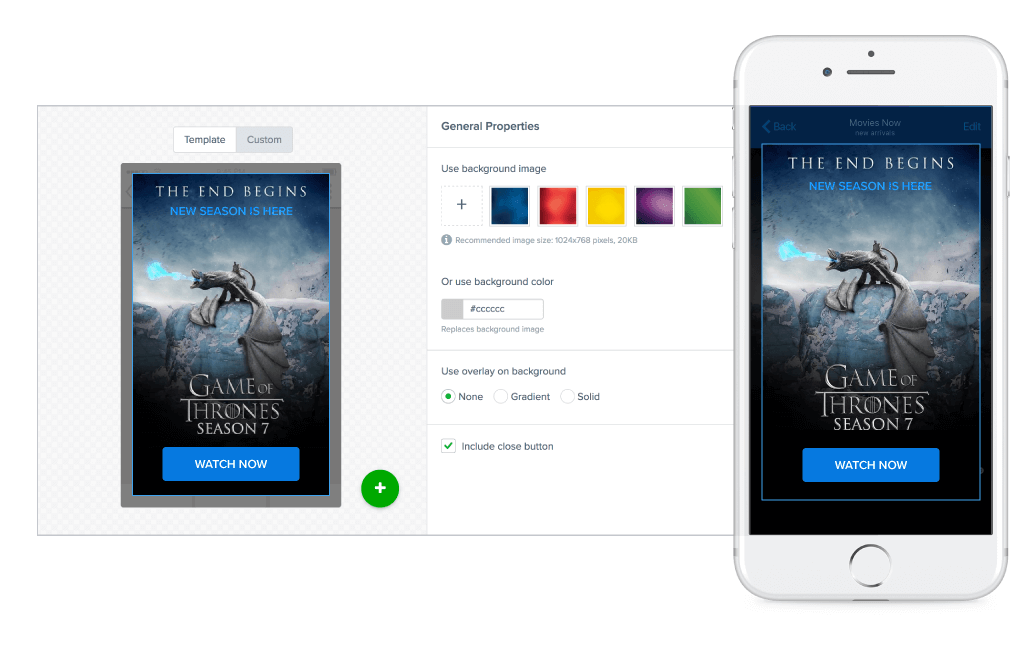
7. Make the CTA Standout
The message is important, but ultimately you want customers to take action. To do so, you need a CTA, or call to action, that stands out. Consider making the CTA a button with two to three words inside. Pick a color that pops too.
Here’s a great example of a CTA: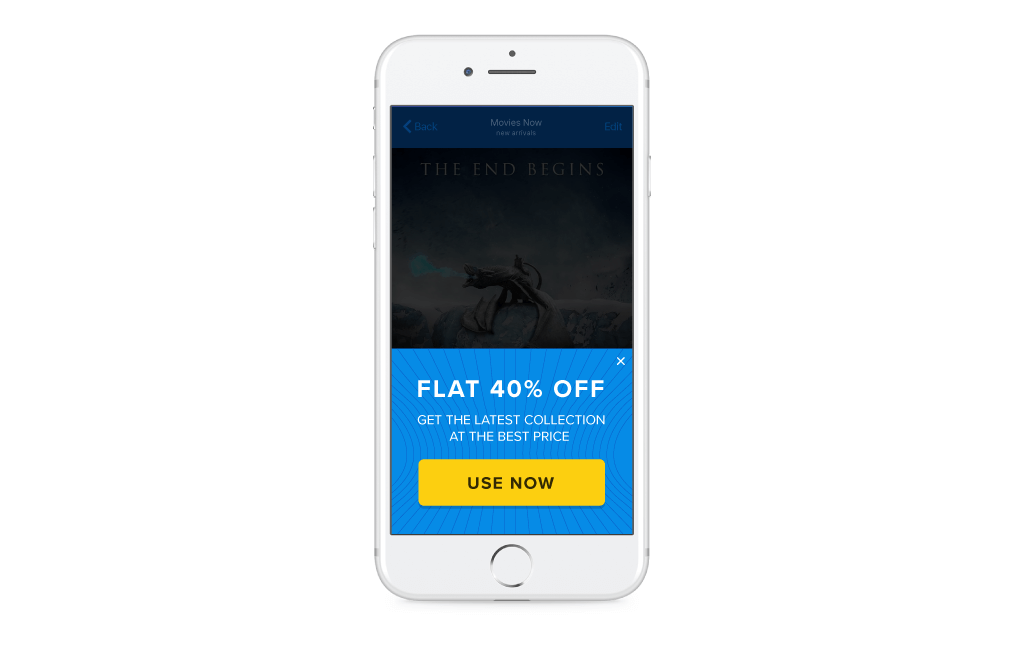
8. Watch your Color Scheme
Most in-app messages stick to two-three colors. You might consider using your brand’s colors, or colors that match your company logo. If your message is too colorful, it’s distracting.
Here’s a great example of a simplistic color scheme: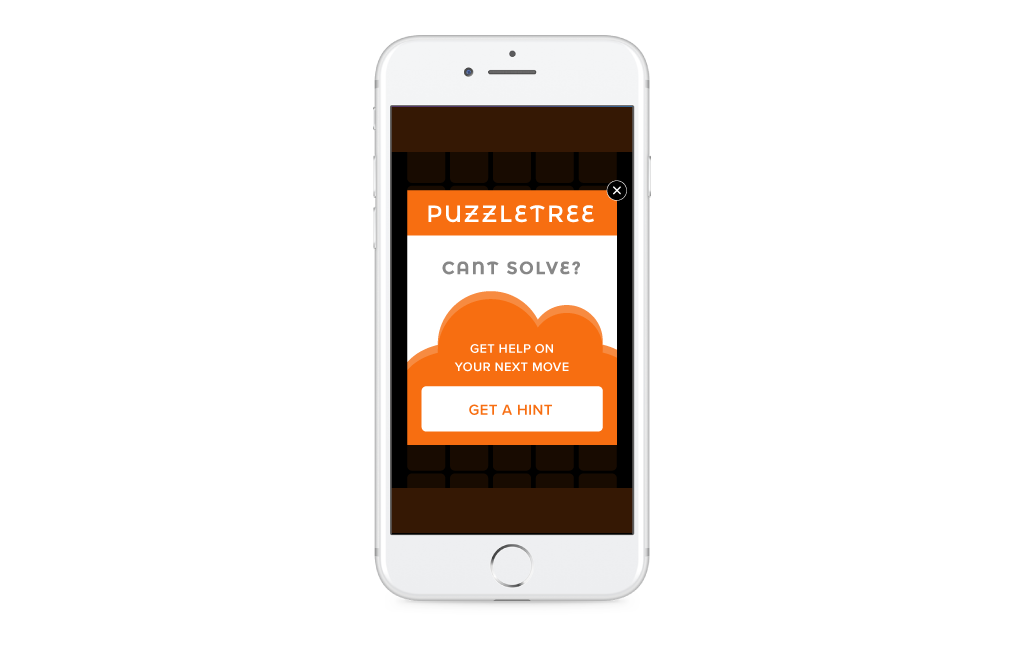
9. Testing is Important
Before you send an in-app message, you should test it first with A/B testing. To test something, you’ll change one variable like the text, placement, image or call to action. You’ll send different versions to small groups of customers and see which one customers respond to.
For instance, if you were testing a message placement, you would send these three versions out to three different groups and see which one tests the best: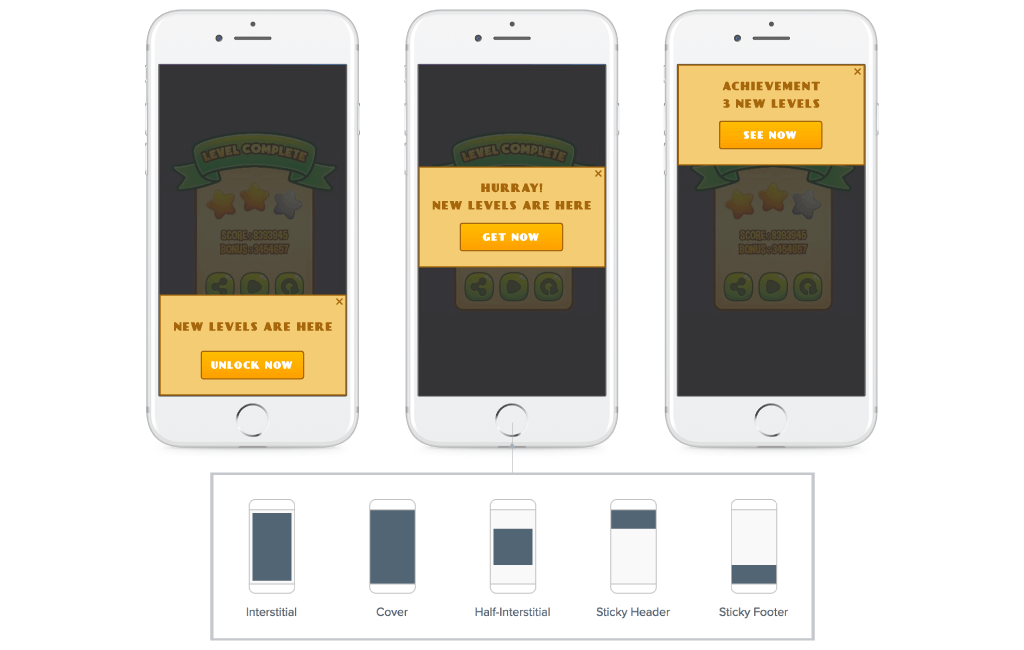
Read the Marketer’s guide to A/B testing article on our blog to know more.
10. Don’t Dominate the Conversation
Many brands use in-app messages to deliver information to their customers, but that shouldn’t be your only goal. You don’t want to dominate the conversation; you want to get customers involved. Use some in-app messages to talk with your customers not at them. Encourage customers to take a survey or use a chat function, for example.
This simple one-question survey gets customers involved:
Ready to create in-app messages for your brand? CleverTap can help you understand your app users and teach you how to create stunning in-app messages that promote your product – all from one easy-to-use platform. Visit our website to learn more.
Deliver Personalized In-App Notifications Based on User Actions